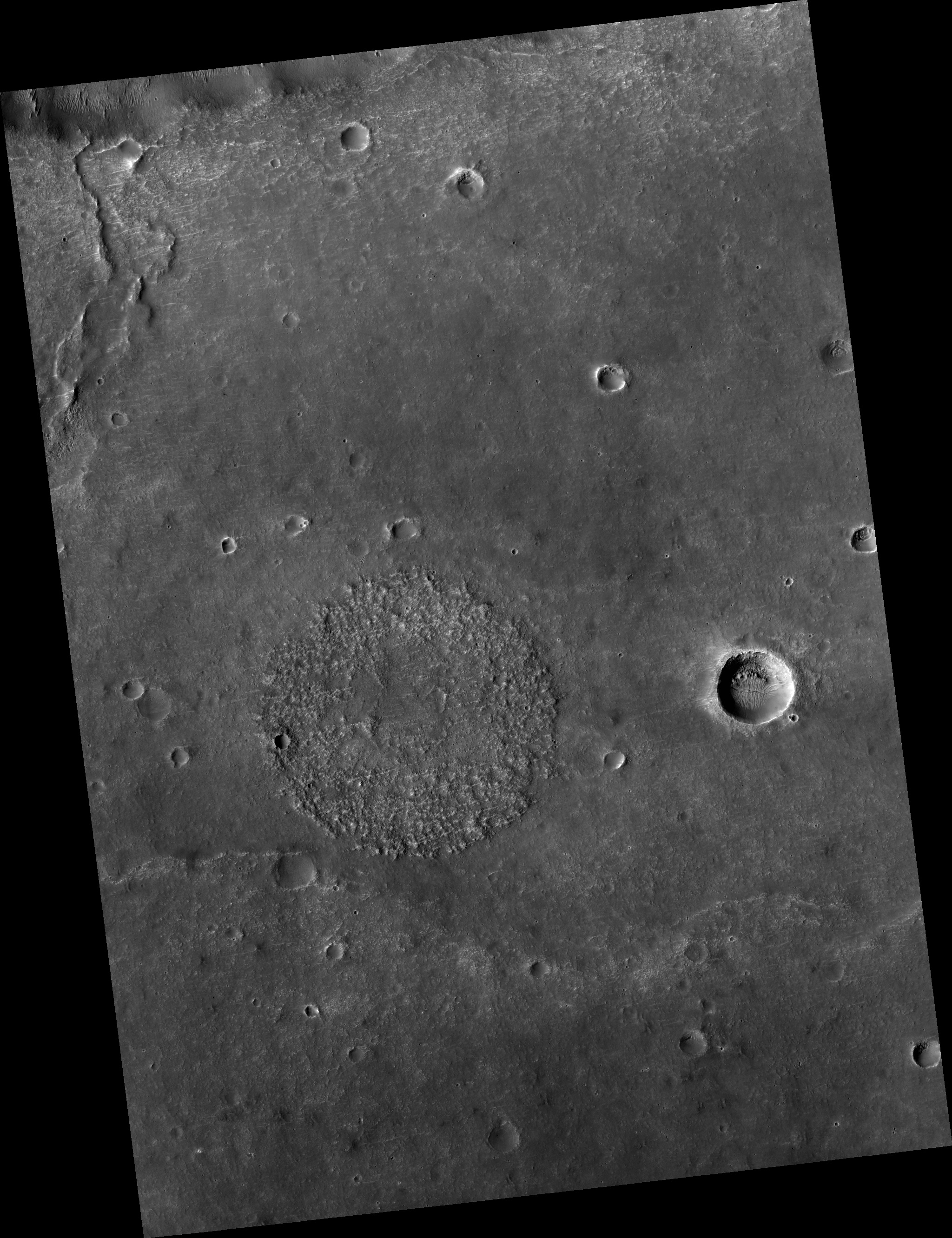Circular feature on Mars reveals potential remnants of ancient impact crater

NASA's High-Resolution Imaging Science Experiment (HiRISE), the most powerful camera ever sent to Mars, has captured an intriguing circular feature on the Martian surface. The image reveals a collection of hills, some of which are interconnected by ridges, raising speculation that this enigmatic formation could be the remnant of an impact crater that was once filled with a remarkably resilient material that proved more resilient to erosion than the surrounding terrain.
This image provides a glimpse into Mars' geological history. Spanning a diameter of less than 5 kilometres (3 miles), the circular feature stands out amidst the rust-coloured terrain. The spacecraft was positioned at an altitude of 254 kilometres (158 miles) when this picture was clicked, allowing for an unprecedented level of detail and clarity.
Over time, as natural erosive processes gradually stripped away the Martian surface, the durable fill material remained intact, standing taller than its eroded surroundings. This remarkable phenomenon can be observed in the HiRISE image, as the hills within the circular formation exhibit varying degrees of erosion.
While this circular feature is captivating, it is just one piece of the intricate puzzle that is Mars. NASA's ongoing exploration efforts, including the Perseverance rover mission and the upcoming Mars Sample Return campaign in collaboration with the European Space Agency, aim to uncover the secrets of the Red Planet's past and evaluate its potential for habitability.
For the unversed, HiRISE is a camera aboard NASA's Mars Reconnaissance Orbiter (MRO) spacecraft that has been orbiting the planet since 2006. The instrument has played a crucial role in advancing our understanding of the Red Planet, revealing its diverse geological features, and providing valuable insights into the planet's past and potential for harboring life.
Operated by the University of Arizona, HiRISE continues to capture breathtaking images, fueling ongoing research and paving the way for future Mars exploration missions.
- READ MORE ON:
- NASA HiRISE camera
- HiRISE Mars images
- Mars impact crater










